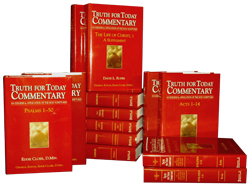 Understand the organization of the Bible
Understand the organization of the Bible
Old Testament– 39 books written in Hebrew– more of library than just one book
- Books of Law– Genesis, Exodus, Leviticus, Numbers, Deuteronomy– most likely all five were written by Moses. You’ll hear them called the “Pentateuch” which simply means “five scrolls” in Greek.
- History– Joshua, Judges, Ruth, 1 & 2 Samuel, 1 :2 Chronicles, Ezra, Nehemiah, and Esther– chronicle the history of the obedience and disobedience of God’s chosen people, the Israelites.
- Poetry/ Wisdom– Job, Psalms, Proverbs, Ecclesiastes, Song of Solomon– For God’s people, wisdom couldn’t be attained apart from God. The same is true today.
- Major Prophets– Isaiah, Jeremiah, Lamentations, Ezekiel and Daniel– called “major” simple because these books are lengthier than the other books of prophesy.
- Minor Prophets– Hosea, Joel, Amos, Obadiah, Jonah, Micah, Nahum, Habakkuk, Zephaniah, Haggai, Zechariah, Malachi– all the prophets were special messengers sent by God to remind His people of their covenant relationship with Him and he consequences of breaking that covenant/ disobedience.
New Testament– 27 books written in Greek– also a library of books
- Gospel accounts– Matthew, Mark, Luke, and John– each book is known by the name of its author. They each chronicle the life of Christ on earth and His teachings.
- History– Acts– the only book that chronicles the first 30 or so years of the church. Within this book is how to become a Christian, how the first Christians lived/ behaved, and how Christianity was spread/ was meant to be spread.
- Letters/ Epistles– detailed the expected comportment of a Christian and the church as a whole, often addressing problems and disputes that arose. These were God-breathed and still teach us what God expects of His called our saints.
- Prophecy– Revelation– The only book of prophecy was basically a letter of encouragement from God to the early Christians being severely persecuted by the Roman government. It was written in figurative (Apocalyptic) language that uses signs and symbols to hide its meaning from people who may want to intercept the message. Having revealed His message in symbols shows God was protecting His people from further persecution from potential Roman readers. The message: I have already won this war. Stay true to Me through the battle at hand because your great reward cannot be taken away by human hands– there is rest and peace for those faithful to Me and judgment for those who are enemies of My people.
Remember that all divisions within a book are man-made: verses, chapters, even the divisions of 1 & 2 Samuel, Kings and Chronicles. Also, the books are not compiled into the Bible in chronological order. For example, it is most likely that Job lived in the same time period as Abraham, yet the book is placed way after Genesis.
Always begin Bible study with prayer.
James 1:5,6 “If any of you lacks wisdom, let him ask of God who gives to all generously and without reproach, and it will be given to him. But he must ask in faith without any doubting…”
Romans 10:17 “So faith comes from hearing, and hearing by the word of Christ.”
You will need to study only from Bibles that are accurately translated from the original manuscripts. The King James translation is not THE holy Bible. In fact, it isn’t even the most accurate and its language is clearly a bit difficult to understand. Though there is nothing wrong with using the King James, you may have better luck studying from the New King James, English Standard Version, or New American Standard translations. The New International Version can be quite inaccurate in many places– so be careful if that is the translation you have. No translation is perfect, but there are some that are just crazy. You’ll do best to use one of the ones mentioned above and avoid the rest.
Also, try to avoid “study” Bibles as most of them include commentary and study aids written by men with denominational doctrine and much error.
Use trusted tools made available to assist your understanding.
- Avoid or at least be VERY careful, using materials that aren’t written by true New Testament Christians!
- Also avoid using materials that aren’t written by true New Testament Christians!
- Be very careful even when referencing materials that are written by true and faithful New Testament Christians! (Acts 17:11)
- Websites like ApologeticsPress.org and FocusPress.org have articles and publications you can use for research and daily inspiration.
 Commentaries can be helpful with tough passages, but do not rely on them for all your understanding. Humans are fallible. Gospel Advocate put out a good series of New Testament commentaries many years ago. [Editor’s note: Resource Publications is a brotherhood publisher who is currently developing the Truth for Today Commentary series. All authors are members of the church of Christ.]
Commentaries can be helpful with tough passages, but do not rely on them for all your understanding. Humans are fallible. Gospel Advocate put out a good series of New Testament commentaries many years ago. [Editor’s note: Resource Publications is a brotherhood publisher who is currently developing the Truth for Today Commentary series. All authors are members of the church of Christ.]- Strong’s Concordance is an invaluable tool. It contains every word in the KJV and its original meaning in the HEbrew of Greek. You can also find it used on many online Bible study sites.
- BlueLetterBible.org is a free online Bible site which includes Strong’s references and the [ability] to search and cross reference in numerous translations. This is not the only one, but is a good one.
- Maps are extremely helpful in understanding much of the Bible. You can find many maps online by doing searches on the time-period you’re studying, like: David’s kingdom, divided kingdom, or Palestine in the time of Christ. A good Bible atlas is a good option, but many contain a world view that differs from the Genesis account of creation. Older Bible atlases seem to avoid that better and seem to include more city sites on their maps– more helpful in Old Testament study, especially. Baker’s Bible Atlas by Charles Pfeiffer is an example of an older Bible atlas that had good maps, and you can often find good maps in old discontinued Bible encyclopedias.
- Highlighting pencils and pens are extremely helpful. Try to find the ones that won’t bleed through the pages. Regular colored pencils work very well and are inexpensive/ easily replaceable. Micron pens are great for writing in your Bible as they won’t bleed through , won’t run over time, and come in many colors. Use the archival pens in the narrowest tip you can find, and you can write in your margins very neatly. Use your Michael’s and Hobby Lobby coupons for these, and don’t let the kids color with them; they’re expensive.
 Set aside a time during your day for private Bible study.
Set aside a time during your day for private Bible study.
Set your alarm for half an hour earlier; you’re more likely to forget or procrastinate if you set your study time at the end of the day. Your mind is sharper in the mornings, especially before you eat anything. (Feel free to have your coffee.) Once you get in the habit, you’ll look forward to this time– you may even start setting that alarm an hour earlier each day!
Click here for Part Two of this series
By Sandi Smith
Sandi and her husband Joe serve with the Brown Trail church of Christ where she teaches elementary age Bible classes as well as ladies’ classes. She is an instructor in the Preacher Wives Program at the Brown Trail School of Preaching and a homeschool mom to their children.

 Welcome! We are so glad you stopped by. Come Fill Your Cup is a group of Christian ladies dedicated to equipping women for study and service. We know you are busy and that life’s hectic pace pulls you in so many directions, but you can’t truly be the woman God desires unless you take time to fill your own cup…not with spa days (though we love a good spa!) or the latest novel…but with God’s Holy Word. We want to help you with that! Our goal is to reach you in the midst of your busy day and give you encouragement, education, and fellowship as you strive to live the life God has laid before you. Our prayer is that we can help fill your cup so that you, in turn, can overflow to all those around you. So, as we like to say…come fill your cup, and let it overflow!
Welcome! We are so glad you stopped by. Come Fill Your Cup is a group of Christian ladies dedicated to equipping women for study and service. We know you are busy and that life’s hectic pace pulls you in so many directions, but you can’t truly be the woman God desires unless you take time to fill your own cup…not with spa days (though we love a good spa!) or the latest novel…but with God’s Holy Word. We want to help you with that! Our goal is to reach you in the midst of your busy day and give you encouragement, education, and fellowship as you strive to live the life God has laid before you. Our prayer is that we can help fill your cup so that you, in turn, can overflow to all those around you. So, as we like to say…come fill your cup, and let it overflow!
Great suggestions!
Thank you for the good encouragement to study! I enjoyed reading your article. ?
In this article the ladies led to a link on how to mark your bible. I e-mailed it to myself so I could print it but when I got to it the ladies link was corrupted sending me to a dating site. Could you send me the instructions on how to mark your Bibles?
Pam Wheeler
Hello! We have several articles on Bible marking that should prove helpful. Here is a link to that category: http://comefillyourcup.com/tag/bible-marking/
If we can answer any questions, feel free to shoot us an email at editor@comefillyourcup.com